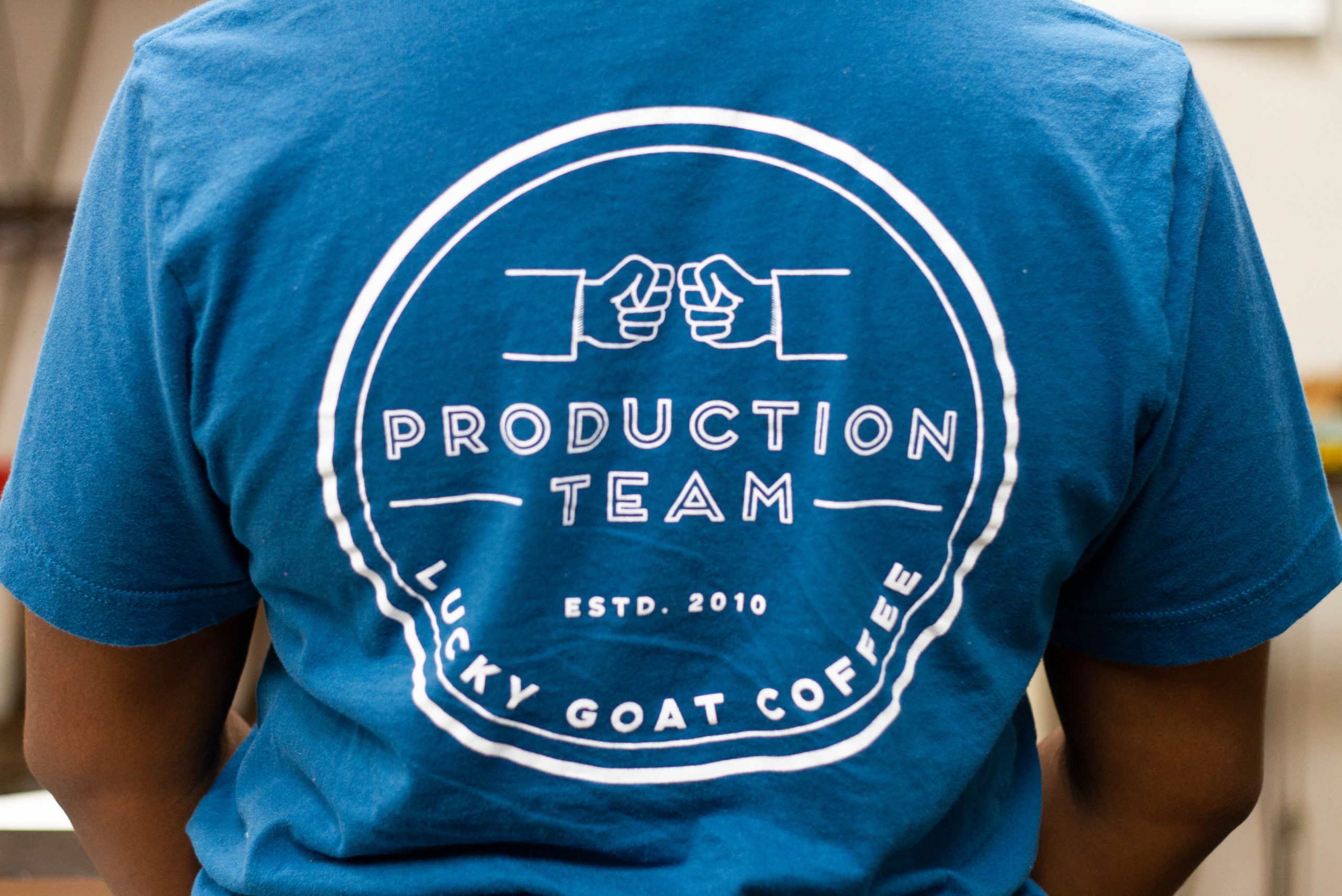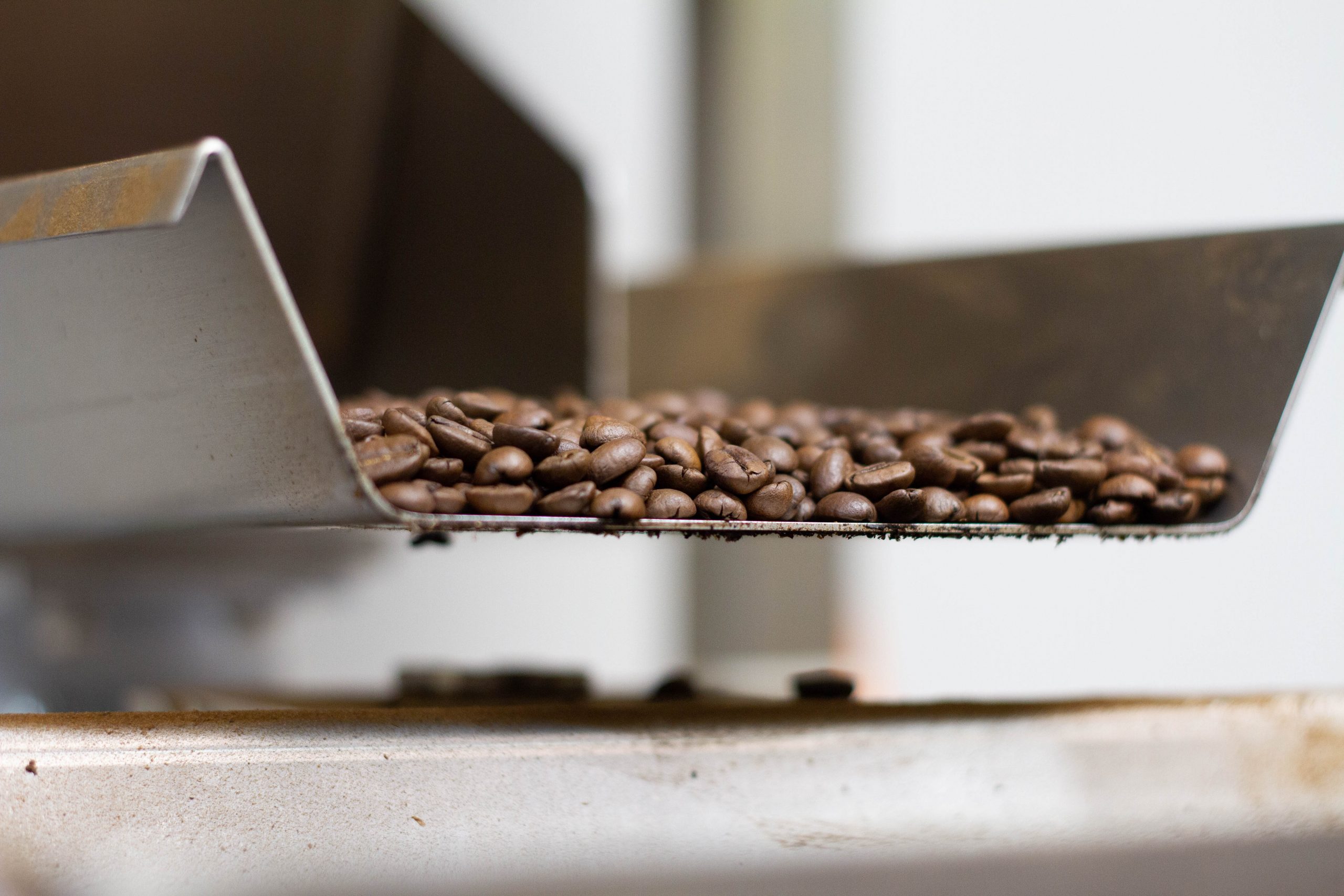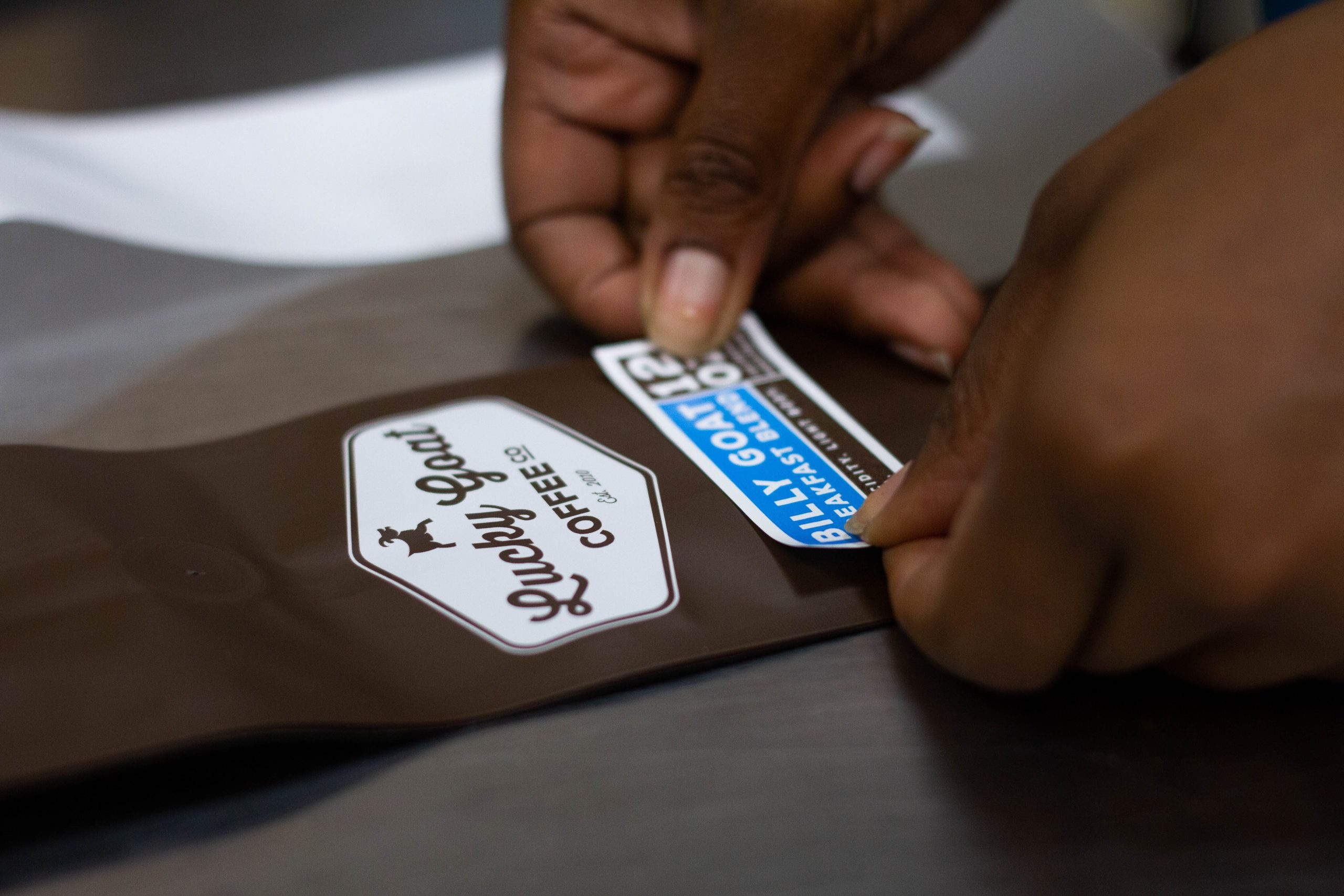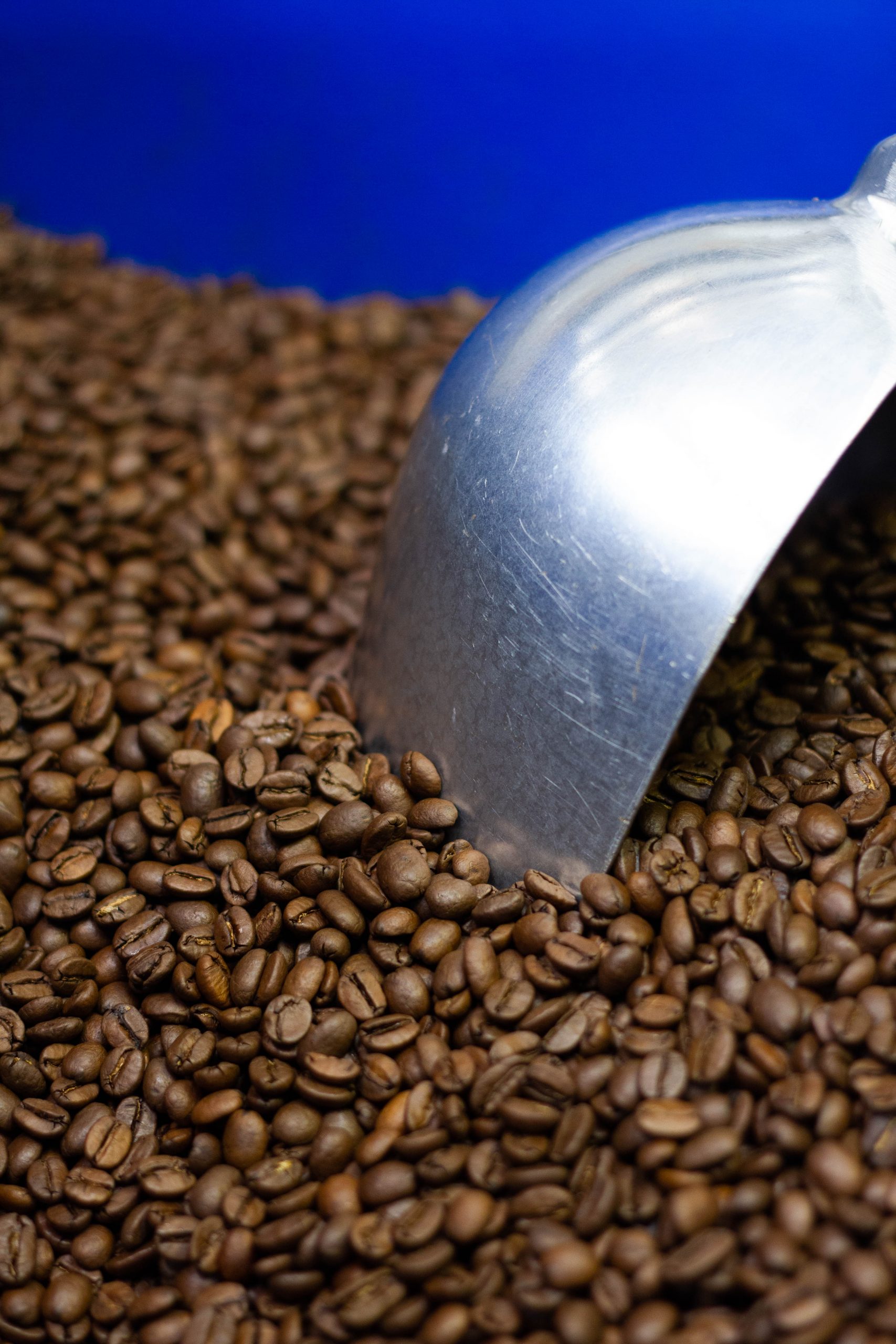
Have you ever wondered what goes into producing the rows and rows of coffee bags that line each of our cafes? It’s all thanks to our amazing Production Team, our very own behind the scenes coffee elves, who measure and package and label each bag of coffee that leaves our warehouse. Since you probably don’t see them on a daily basis, we wanted to take the time today to introduce you to the faces behind the bags.
Our Production Team is made up of Michael, Johnathan, Brian, and Antoinette. We met up with them and asked some questions about what it is they do and how they got here.
“Talk me through what it takes to produce a bag of coffee at Lucky Goat.”
“First, we receive freshly roasted coffee from our Roasters (Joe & James).” Brian explains, “Then, we take our custom printed label and label the bag. Third, fill the bag. Fourth, we heat-seal it to maximize freshness. Finally, it is either delivered or shipped to one of our 3 cafes or one of our Wholesale clients.”
“How does heat sealing maximize freshness?”
“Heat sealing ensures that the bag is completely sealed so that no oxygen goes into the bag. This keeps the coffee as fresh as possible.”

“Seems straightforward. So, what does a workday look like for each of you?”
Johnathan: “Each day is different. I’ll start out by looking at what orders need to be packed. Then, I’ll work on restocking for the cafes.”
Michael: “My workday starts with turning on the production machinery, and then it’s on to online order fulfillment. After that, we make sure the cafés are provided with all the retail bags they need for customers to purchase I store to take home. If it’s not retail bags for the stores, it’s completing all the orders that come in from our wholesale customers.”
Brian: “I start my day assisting Paul, our Cold Brew Master, with freshly making cold brew. Then, I transition by helping our production staff optimize efficiency in packaging coffee and fill orders that we receive.”
Antoinette: “I’ll start my day with printing labels for customers and wholesale coffee orders and restock for the cafés. When printing is done, I label the bags needed and then finish up with packaging the orders in the production room with the rest of the team. We do that for the rest of the day until all orders are complete, then we clean up and head home to come back tomorrow.”

“Wow, that’s definitely a lot to keep up with. So how did each of you come to work for Lucky Goat?”
“I actually applied for a driver position,” Johnathan chimed in. “I knew someone who used to work here, so I applied and eventually got placed on the Production Team.”
“I knew someone who worked here too, they told me about the position,” Michael added.
Brian smiled, “My now-fiancé loves Lucky Goat. There was a position open for the Cold Brew Bus Master that she said I should apply for, and I did.”
“Wait. So, what made you switch to Production?”
“I really loved the change of pace and the serving aspect of coffee, based on the experience I had in the food-industry for the last three years. I also enjoy that I’m not doing the same thing all day. Every day is so versatile and different.”
“What about you, Antoinette?”
“I came to work for Lucky Goat Coffee after working as a barista in New York City. I went to New York to work for a community service organization, and after my service completion I needed to find part time work in order to save up and return to Florida.”
“Why coffee?”
“I’ve loved coffee since I was little. Growing up in a Caribbean household, my grandmother always had coffee brewing early in the morning. Pursuing a career in coffee was unexpected, but it’s been rewarding for me. I’ve learned so much from a culinary perspective while also being able to connect and learn from others. There’s so much that goes into a cup of coffee, from planting and caring for a coffee plant, to roasting the beans and finally drinking it.”

“So out of all the coffees you’ve produced at Lucky Goat, which is your favorite?”
Johnathan and Michael quickly agreed on the El Salvador, Pink Bourbon which had recently been on our shelves. Brian opted for a classic, our Roastmaster’s Blend, because it’s “delicious, not too heavy, as well as not too light.” Antoinette chose the Sumatra Mandheling, Tiger because of her love for dark coffees. “The beans themselves are dark and oily, you can visually see that it’s a dark roast. It’s a great single origin and for a dark coffee, it’s super smooth.”
“Alright, final thoughts. What’s the most interesting facet of production you’ve learned?”
“If you leave a whole bean bag sealed, it can last for two years,” Johnathan shared. I laughed at the thought.
“I just learned the fork-lift,” Brian lit up as he spoke, “and that has been really cool. Also, just learning to make cold brew, that process was very interesting.”
Antoinette: “Creating flavored coffee. Each flavor recipe is super specific and there is a process that goes in to making every bag perfect. For me, following the process for each batch is like cooking, something else that I love. There’s even an aromatherapy aspect to each batch, from the oil blends in our flavors.”
Michael thought for a moment before he spoke, “Learning how to produce a product at such a large scale has probably been the most interesting thing I’ve learned how to do while at Lucky Goat.”
Although they may not be the most visually apparent vessels in our company, the Production Team is vital to all that Lucky Goat does. I was so glad I could sit down and hear them talk even more about what it is that they do every day.
From flavoring to packaging, the next time you pick up a bag of Lucky Goat Coffee, you can thank the Production Team for making it possible.